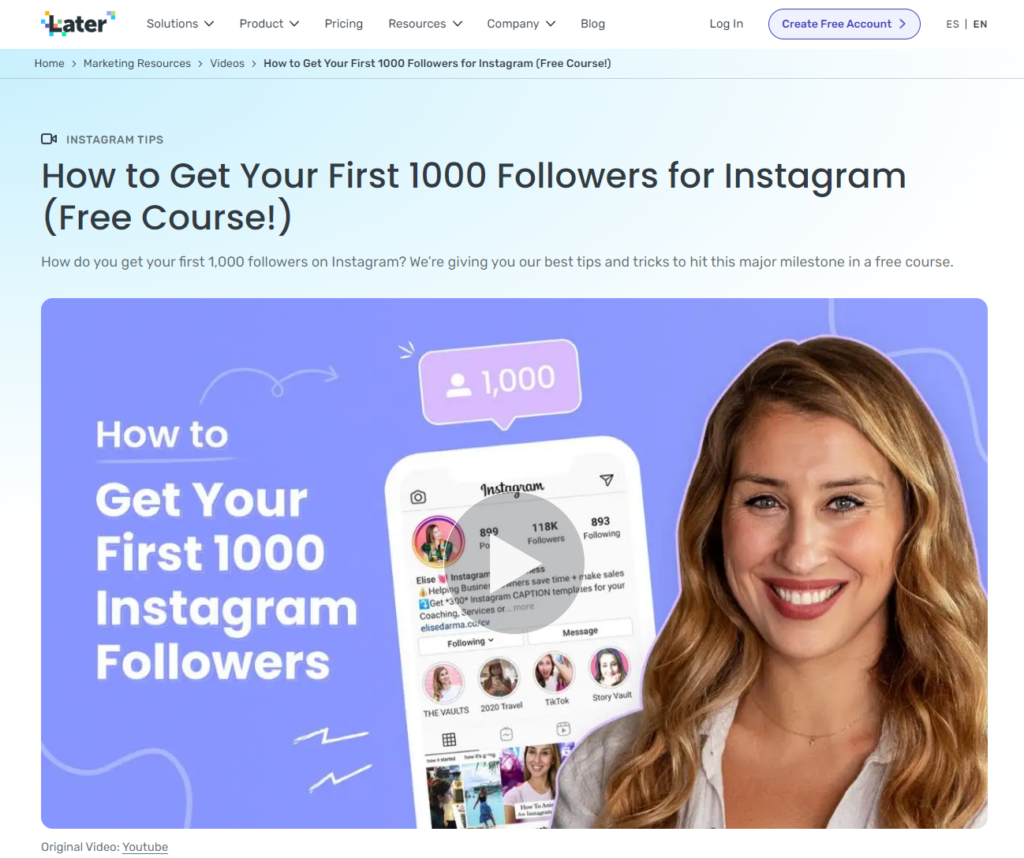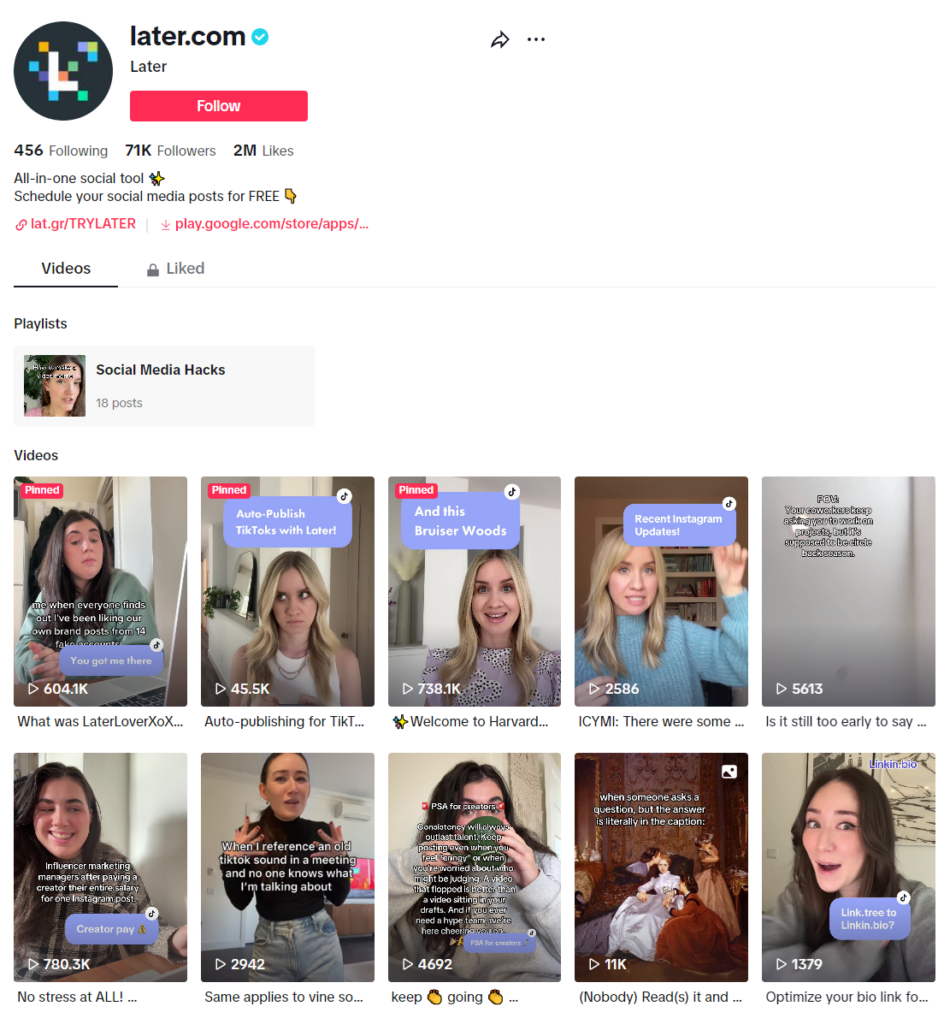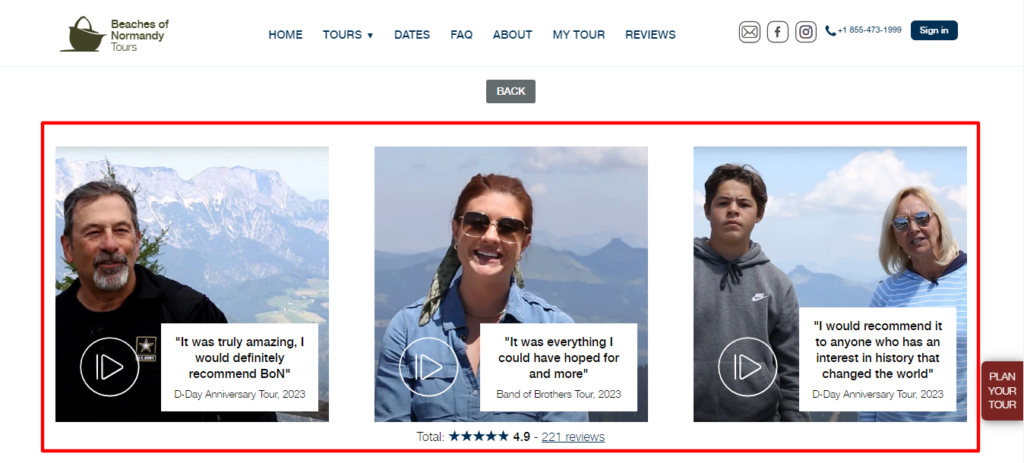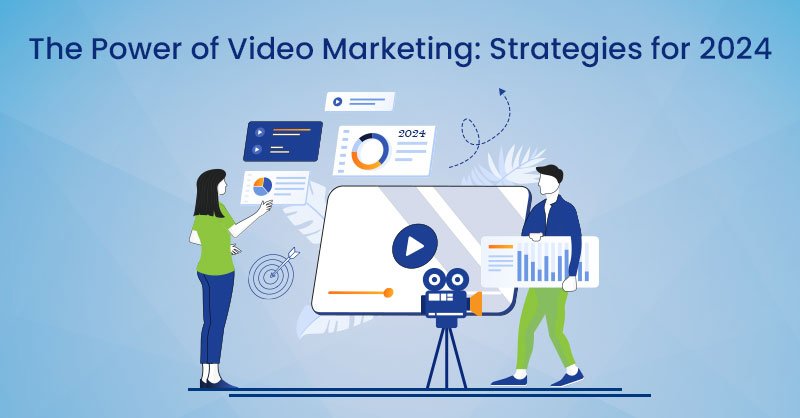According to Statista, online video ad spending between 2023 and 2028 is expected to show an annual growth rate of 6.49% worldwide—with a projected market volume of over $241 billion by 2028.
And for good reason.
There are billions of digital video viewers around the globe… and that number is expected to only increase.
Whether you sell software, products, or services, video marketing can help you attract the right audience and lead them down your sales funnel.
In this guide, we’ll quickly review what video marketing is and the benefits of using it. We’ll also discuss how to develop your video marketing strategy, along with some video examples to inspire you.
Let’s take a closer look at the power of video marketing.
What is Video Marketing?
Video marketing is a strategic technique that uses videos to promote products or services, engage with a target audience, and drive desired actions.
When you optimize videos for SEO, make them accessible across different channels, and measure their impact on brand goals, you create powerful tools for your business. These tools help captivate the right audience, garner more sales, and build your brand reputation.
Benefits of Using a Video Marketing Strategy
Businesses use video marketing strategies to build meaningful connections with their ideal customer. Videos help them paint their brand stories more vividly than any other content asset can.
Great storytelling hooks your target audience and more deeply solidifies who you are as a brand.
With the right video marketing strategy, you can:
- Build brand awareness
- Inform and engage your audience
- Introduce new influencers
- Entertain viewers
- Gather customer testimonials
- Not only tell but show a compelling story
- Nurture leads
- Boost conversion rates
And speaking of the right video marketing strategy…
Developing Your Strategy
Here’s how to develop your video marketing strategy:
Know Your Target Audience
Understanding who your solution or product is for is the first step to developing an on-brand video marketing strategy.
Dig deep into your potential customers and segment them into groups. Create a target buyer persona or ideal customer profile for each customer group.
Include details, such as:
- Firmographics or demographics
- Annual salary or business net worth
- Pain points
- Challenges when looking for a solution
- Buying patterns
- Needs and desires
- Sales funnel stage
For instance, Hims, a telehealth brand, targets men with wellness challenges. Within that audience, it serves three segments, including men who struggle with mental health, hair loss, and sexual health concerns.
To build trust and emotional connections with its audience segments, Hims distributes marketing videos to help them , treating dry scalp, and getting help for anxiety.
In fact, the following video Hims released has over 36 million views at the time of this writing.
Source: YouTube
By helping its audience feel seen and heard with engaging videos, Hims encourages interested viewers to visit its website.
When there, the telehealth brand uses guided selling strategies, including online product discovery quizzes, to guide website visitors to the exact solution for their needs.
Prospects need to enter their contact details to get their results. If they don’t purchase the solution, Hims still benefits by adding them to its email list for automated lead nurturing sequences.
In other words, knowing your target audience isn’t just a nice-to-have. It’s your foundation for building an effective video marketing sales funnel.
Set a Timeline and Budget
Take a close look at your financials to determine an accurate video marketing budget.
Beyond the equipment you might need, consider costs such as:
- Producing
- Shooting
- Editing
- Distributing
- Advertising
If you’re not a professional video marketer or have an in-house creative team, consider outsourcing to video marketing professionals, such as TechWyse video development services.
If you do have the means to create great marketing videos, build in strategic processes you can use to produce and distribute quality video content, consistently.
For instance, keep a project timeline, schedule your videos months in advance, and allocate your budget appropriately.
Choose Multi-Channel Distribution Platforms
While lasering in on one distribution platform is better than not posting at all, using a multichannel approach can help spread your brand message faster.
Get inspired by Later's smart move with its free Instagram followers training video workshop.
With its 50 thousand subscribers on YouTube, the brand posted a sneak-peek video there, which resulted in 136 thousand views.
Source: YouTube
It also shared the video on its website for its organic visitors:
 Source: Later.com
Source: Later.com
Later also features how-to videos about Instagram and other social media marketing tips on LinkedIn, Pinterest, Instagram, Facebook, X, and TikTok.

Source: Tiktok
By tailoring each video according to its distribution channel, Later creates videos that look and feel native to each platform.
To follow suit, consider factors such as average view time, size and sound limitations, communities, budget, and promotion opportunities when choosing your video distribution platforms.
Create a style guide for each platform to help your production team plan and edit assets according to each channel’s design and limitations.
Know Which Metrics to Track and How
Tracking video marketing metrics shows whether your video strategy is helping you reach your goals.
To start, define clear objectives, such as sending qualified buyers to your website, generating leads, or nurturing middle-of-the-funnel prospects.
Then, choose your metrics.
Here are some common ones to consider tracking:
Impressions
Track this metric to see how many times a video is displayed to users. More impressions may lead to more brand visibility.
Likes, comments, and shares
If your videos consistently see more likes, comments, and shares, your audience is interacting. This means your content is resonating with your audience.
View counts
Monitor view counts to see how many times your video has been watched. High views may mean your videos are engaging and interesting.
Watch times
Keep up with this metric to see how long viewers stick around. Longer watch times mean you’re creating captivating content.
Video views
This metric reveals the total number of times your video has been watched. Tracking this alongside other metrics can help you understand overall video performance.
*Pro-Tip: Use professional tools to track metrics and analyze data, such as TechWyse Ultimate Measurement Service and social analytics tools like Sprout Social.
Types of Videos for a Video Marketing Strategy
To round out your video marketing strategy, choose the types of videos you’ll focus on most.
Here are some examples to inspire you:
Product Videos
Product videos rely on storytelling to showcase new product launches or convey a brand's personality and journey.
Creating a captivating story when planning your product videos is paramount to connecting with your audience and increasing brand awareness.
For instance, YUPLAY gets creative on TikTok by showcasing gaming tips and trends. Avid gamers view the videos since they align with their interests.
But the storytelling does more than draw them in…
It subtly reveals product options and additional features the viewer might be interested in. This might be a roundup of popular video games featuring characters that wear its virtual products, like its Fortnite Spiderman Zero outfit or its Catwoman's Grappling Pickaxe Claw.
Here’s an example of a captivating video it posted on TikTok featuring the most-played games of the year:
@yuplay.com Which have you played? #YuPlay #gaming #overwatch2 #apex #lostark #csgo #dota2 #pubg #fyp #foryou @Tom ♬ original sound – Tom
Source: Tiktok
Since its videos feature high-action video game content, viewers watch for the thrill, only to be led to purchase.
Educational Videos
Use educational videos as a valuable tool for teaching your audience something new—and building their foundational knowledge about your business.
Plan product demos, explainer videos, interviews with experts, video series, and tips on specific topics relevant to your audience to create educational content.
Take this tip up a notch by integrating user-generated content (UGC) and storytelling into your educational videos.
Get inspired by Beaches of Normandy, a travel agency specializing in World War II site tours across Europe, with Utah Beach being a prominent destination.
It currently has an educational video series on its site and other platforms with real narrations and interviews with former customers.

Source: beachesofnormandy.com
This puts the viewer in the customer’s shoes as they take a “virtual tour” into their experience.
Since the customers are the stars of the show, viewers feel less “sold to” and more guided by a friend or fellow shopper.
And speaking of UGC…
User-Generated Content (UGC)
UGC has become the cornerstone of successful video marketing, offering a genuine and relatable touch to brand narratives.
Get inspired by StudioSuits. Another brand that leverages UGC videos to build trust with its audience.
Renowned for its meticulously crafted men’s custom pants and suits, StudioSuits understands that authenticity resonates. In the personalized fashion industry, StudioSuits uses UGC to amplify its message.
The brand collaborates with influencers (like Sartorial Styles on YouTube) who provide comprehensive reviews of the custom ordering process and share personal experiences.
Source: YouTube
This inside look helps StudioSuit’s audience visualize what it’d be like to order their own custom fashion pieces. The hand-holding review process gives them one less thing to think about when heading to the brand’s site to place an order. This eases their burdens and nudges them one step closer to purchase.
Marketing Videos
Use marketing videos to promote products, showcase testimonials, or share brand stories.
Speak in your audience’s language and highlight solutions to their pain points to encourage higher engagement rates and connect with them on a deeper level.
For instance, when referencing its lab-grown diamond stud earrings or custom engagement rings, Custom Origin uses language such as:
- “Conflict-free”
- “Sustainable”
- “Exclusively lab-grown”
- “Clean diamonds”
- “Lab-grown”
- “Clean diamond jewellery”
- “Clean diamond jeweller”

Source: YouTube
This speaks to its audience’s preferences for environmentally friendly and ethically sourced jewellery options.
Eco-conscious shoppers on the hunt for jewellery that aligns with their values quickly grasp that Clean Origin is a safe bet with its intentional language use.
Start Your Video Marketing Journey
And there you have it!
In this guide, we discussed what video marketing is and the benefits of using it.
We also covered how to develop your video marketing strategy with real brand examples to inspire you.
Now, it’s your turn to take these insights and turn them into action.
If you don’t know where to start, grab simple equipment, like a smartphone, and experiment with product, educational, and marketing videos.
Then, see if your VIP customers wouldn’t mind shooting videos of themselves using or reviewing your product or service. You can also ask budget-friendly micro-influencers to help spread the word.
Take a look at the assets you created, edit them for each channel, and plan your distribution strategy.
Then, track your metrics, and adjust your approach as needed.
And remember, if you need professional assistance, TechWyse can help. Book a 20-minute strategy call to learn more.
Here’s to your success!






